
ART + ARCHITECTURE
Louise
The buildings we create are powerful and enduring symbols of who we are, what we care about, and the people we choose to be with. University buildings have the added responsibility of defining excellence and piquing our intellectual curiosity. University buildings should inform future generations of the legacy they must uphold. They are also home to a diverse and global community of students, sta and faculty.
Three considerations shaped the design of the Seymour Schulich Building (2003), the Dezsö J. Horváth Executive Learning Centre (2004) and the Rob and Cheryl McEwen Graduate Study & Research Building (2018). The first was the need to create an impression of the visceral and experiential connections among members of a community. Upon walking through the front door, this impression should emphasize the importance of a community that is inclusive, diverse and global. Second, buildings must enhance the connection between the built and the natural environment. The relationship between indoor and outdoor spaces includes panoramas of the urban landscape, changing patterns of natural light and shade, and the sounds and sights of rain, snow, wind and seasonal variations. Third is the belief that architecture and art are intimately connected and share the same intellectual base. One cannot have good architecture without good art. Architects shape objects to express a complex set of ideas, address functional requirements and create usable space. Artists have greater freedom to address the senses with a broad array of visual elements that add considerable power to architecture. Art can use size, scale, colour and texture to enhance the meaning of a building. Architecture needs art to communicate complex ideas, emotions and context, as well as o er an interpretation of places and events.
We encounter architecture more than we do art. We assume that art is something installed in museums, galleries and on the walls of a house or o ce. Seldom do we get to experience firsthand the deep connection between the two. Walter Gropius, founder of the Bauhaus (1919–1933), used to say that an architect should be as familiar with painting as a painter should be with architecture. In designing the Schulich complex we embraced the Bauhaus principle of creating Gesamtkunstwerk (“comprehensive artwork”), in which the two arts would be brought together.
SEYMOUR SCHULICH BUILDING
This building for the Schulich School of Business was a joint venture between Hariri Pontarini Architects and Robbie Young + Wright, and was completed in September 2003. It received the Governor General’s Medal in Architecture in 2006. The building embodies a commitment to an enduring architectural style highlighted by natural light throughout, opening windows, and a relationship with outdoor space through a series of landscaped courtyards. The interior o ers extensive unassigned open seating and study areas on all three floors, with large lecture halls on the ground floor. The exterior, and parts of the interior, are clad in Algonquin limestone quarried locally. The building remains a testament to the values of the Schulich community and its commitment to excellence in all that it pursues.
3
“Art is a way of recognizing oneself.”
Bourgeois
Left: Dezsö J. Horváth Executive Learning Centre
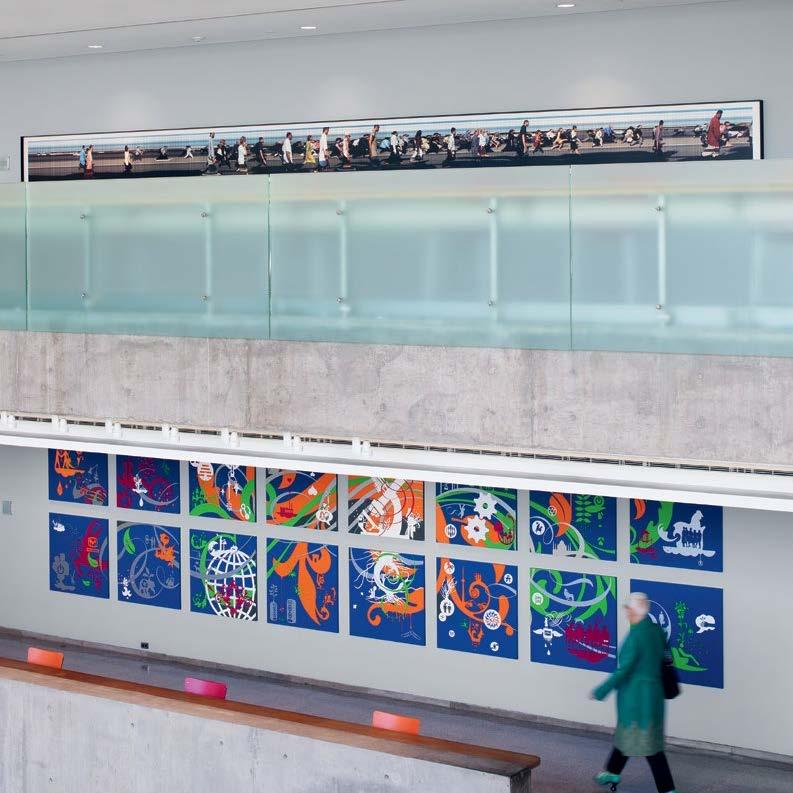

An additional argument can be made for integrating art and architecture. This integration heightens intellectual curiosity and strengthens interdisciplinary thinking. Universities are organized around silos, highly focused specialists, and campus designs that separate disparate parts in a visually disjointed arrangement. The integration of art in the Schulich buildings is an attempt to break this pattern and bring order to a variety of experiences as one walks the corridors. Art adds an aesthetic dimension to a campus journey that is usually void of personal enrichment.
The curated art collection at Schulich was guided by three objectives: where possible, promote young artists, both domestic and international; select art with a business theme; and install art as an integral part of the building. Art is mounted throughout public areas, where it can be seen and enjoyed. The rapid schedule for completion of the Schulich Building and the Executive Learning Centre precluded the involvement of an artist at the early design stages. But the simplicity of the architecture o ered numerous locations well suited to art of various sizes, on all floors. With the McEwen Building, there was su cient time to involve a group of chosen artists at the preliminary design stages. At several locations in McEwen, art was commissioned to suit the space and context.
This book presents the results of an exercise to integrate art and architecture as a key part of the Schulich experience. This is particularly relevant for a school of business, whose graduates are expected to contribute to society in multiple ways. The great artist Louise Bourgeois (1911–2010) expressed the task so well in our introductory quote. Finding oneself cannot be achieved without integrating an aesthetic dimension that enhances good judgment, has emotional appeal and enriches life experiences. There will be a time in the career of a Schulich graduate when they must resolve that elusive conflict between aesthetic judgment and practical application. Hopefully, our graduates will recall their days at Schulich, where art o ered an opportunity to cultivate a counterbalance to the pressures of the business world.
Judy Schulich and I would like to acknowledge the strong support of Dean Horváth in assembling this collection. Dean Horváth always respected the independence of our judgment and understood the contribution this collection would make to the reputation of the School.
Professor James McKellar
Professor James McKellar, FRAIC, was for many years Associate Dean, External Relations and former Director of the Brookfield Centre in Real Estate and Infrastructure in the Schulich School of Business. He has a Master in Architecture and Master in City Planning from the University of Pennsylvania, and a Bachelor of Architecture from the University of Toronto. Prior to joining York University, he was the Founding Director of the Center for Real Estate at MIT. In addition to MIT, he has held faculty appointments at the University of Pennsylvania and the University of Calgary, and was a Visiting Professor at Johns Hopkins University. He has lectured at universities in North America, Asia and Europe, and addressed various industry and government groups around the globe. Throughout his career, he has pursued a combination of professional practice, art, education and the power of creativity to shape the built environment.

5
ART + ARCHITECTURE
Top: Michael Awad, Bay Street Rush Hour; bottom: Ryan McGinness, Chic Lush

REFLECTIONS ON THE TRANSFORMING POWER OF ART
My journey with the art collection at the Schulich School of Business began in 2003 when I attended the opening ceremony for the School’s new Seymour Schulich Building. The building, designed by architect Siamak Hariri, founding partner of Hariri Pontarini Architects, was elegant, sophisticated and thoughtful. It was the first of its kind in Canada and provided the template for several academic institutions to be rebuilt or renovated in its likeness. Standing inside the new, contemporary building, one could sense the promise of the students who would soon study there. The walls, however, were empty.
As a business graduate myself, I was familiar with both the academic terrain and the mindset of the incoming students who would inhabit the new building. I had the pleasure of collaborating with Schulich professor James McKellar on a curated art collection across all three buildings: the Seymour Schulich Building, the Dezsö J. Horváth Executive Learning Centre, and the Rob and Cheryl McEwen Graduate Study & Research Building. Together, we were committed to building a collection that would reflect the identity and values of the Schulich School of Business, be relevant to the themes and concepts being taught, and compliment the impressive architecture.
Given Schulich’s identity as a Global Business School and its culturally diverse student body, it is only natural that the collection celebrates both Canadian and international artists. A diverse group of artists from across Canada is represented in the collection, as well as others from the United States, Brazil, Korea, Turkey, the United Kingdom, Sri Lanka and Germany. Each artwork relates to the wide-ranging course of study at the School and reflects the emphasis the School places on globalization, innovation, diversity, and environmental and social responsibility. Take, for example, the first piece visitors encounter as they approach the reception desk on the main level of the Seymour Schulich Building: a shadow painting commissioned from Mary Temple, an artist from Arizona living in New York. This meditative and peaceful painting, titled York University Window: East Wall, South Light, depicts light casting the shadows of plants and architectural elements specific to the Seymour Schulich Building. It is not a typical landscape painting in a frame, hung centred on the wall. Rather, this is a site-specific artwork that was painted to fill the corners of the wall rather than the centre, and it serves as a welcome to the School and an introduction to the collection. It rewards those who take the time to stop and think about what they’re looking at. Is that a real shadow? Where is the light coming from? How can it exist on that wall?
Many of the works in the collection were commissioned for specific locations in the School. When I first saw the work of Michael Awad, his photographs were one foot wide by eight feet long. I asked him if he could make one thirty feet long! The result was Bay Street Rush Hour, which hangs in the third floor main hallway of the Seymour Schulich Building. Michael had built an innovative camera that only records motion, so that all the architecture becomes blurred and unrecognizable. He was using this to make portraits of cities depicting the people moving within them, and not the typical architectural landmarks. In business, people have become the most important commodity, and top talent is sought after to lead, think creatively, and drive the new knowledge economy.
ROB AND CHERYL McEWEN GRADUATE STUDY & RESEARCH BUILDING
Designed by Baird Sampson Neuert Architects Inc., this is a LEED Gold Certified Building and winner of the 2020 Ontario Association of Architects Design Excellence Award. It was also awarded the Canada Green Building Council Green Building Award in 2020. The building is recognized for its leading-edge sustainability features including a solar chimney to supplement heating, cooling and natural ventilation, and has its own weather station linked to building controls. It is designed to perform one-fifth below the Canada Energy Code and one-third below established carbon emission targets. This required a whole new approach to integrative design of the building, with a focus on people, their comfort level, and air quality standards.
7
Left: Rob and Cheryl McEwen Graduate Study & Research Building

REFLECTIONS ON THE TRANSFORMING POWER OF ART
Ryan McGinness’ work of 16 panels featuring laser-cut vinyl imagery is another commissioned piece that truly stands out. The middle panels show the logo of the School: two leaves expanding outward with a microscope growing roots in the centre. Here, humans sow the seeds of innovation that are dispersed throughout this playful artwork. McGinness’ depiction speaks to human innovation, while also referencing nature and our impact on it.
The Rob and Cheryl McEwen Graduate Study & Research Building represents an extension to the original Schulich collection and is deeply rooted in Schulich’s core brand: global, innovative and diverse. For this building, we were particularly fortunate to have pre-construction planning time with the architects to ensure that the artwork was fully integrated, from lighting to wall design, in the best possible way. The benefit of this advance planning served us well when placing the Hank Willis Thomas piece, Visa, on the main level. It is a quilt made from football jerseys that are branded with recognizable corporate logos such as Emirates, Yokohama Tires and Standard Chartered Bank. This colourful work makes some dark references to appropriation, modernism, colonialism and international commerce. Football, the most popular sport in the world, relies heavily on the labour and skill of players primarily from the African diaspora. This artwork opens a conversation about the battlefields of art, sport and commerce within a global context.
Throughout this journey, our goals were simple: have the entire community – students, faculty, sta , friends and alumni alike – enjoy the art, see its relevance to their lives and the School, and expand their knowledge. Sometimes, we don’t realize how important something is until it’s lost. If all the art was removed from the walls, how would the School feel? Representing arguably some of the best, museum-quality art being created today, I hope the community will be inspired by this collection across the three buildings in the Schulich complex. The works in the curated collection at the Schulich School of Business were selected for the community to enjoy, be challenged by, and perhaps prompt one to think about the world a little di erently.
Judy Schulich
Judy Schulich is President of The Schulich Foundation, one of Canada’s largest private philanthropic foundations. She directs the Schulich Leader Scholars Program, Canada’s largest undergraduate scholarship program, awarding 150 scholarships each year to entrepreneurial students enrolled in STEM (science, technology, engineering, math) programs. Prior to her role at The Schulich Foundation, Judy founded Blueprint:DNA, an art consulting company that helped private and public institutions build contemporary art collections. Clients included George Weston Limited, Stikeman Elliott LLP and St. Michael’s Hospital. Judy is a graduate of the University of Western Ontario with an Honours degree in Business Administration, and has a Masters degree specializing in the art market and connoisseurship from Christie’s, New York. She serves on the board of the Art Gallery of Ontario and chairs its Photography Curatorial Committee.

9
Left: Hank Willis Thomas, Visa
RYAN McGINNESS

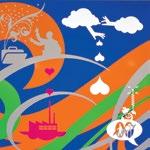


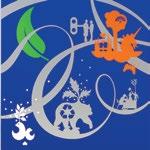

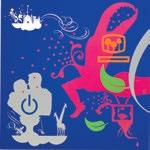

Chic Lush
2004
Vinyl on painted aluminum panels
16 panels each 36" x 36"
Commissioned by the Schulich School of Business
Ryan McGinness, a highly prolific American artist who has had solo exhibitions around the world, has developed an elaborate visual language based on graphic icons. The symbols of universal communication he manipulates derive from recognizable slices of popular culture. Their layered arrangement on the slick, almost industrial manufactured surfaces of his work o ers open-ended narratives about contemporary consumer habits, values and appetites. While some elements in this piece are taken directly from standardized visual language, such as the ‘recycling’ logo, the round ‘power on’ symbol found on computers, or the leaf taken from the School’s trademark, others are created by the artist himself and suggest more complex, if ambiguous, ideas. This work, sprinkled with graphic references to business and Canadian culture, speaks about global issues of diversity, environmental awareness and international commerce.
10
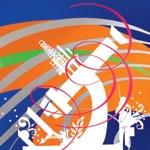


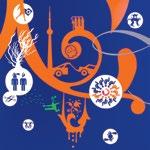
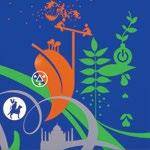




11
HANK WILLIS THOMAS
Visa 2017
Mixed media including sport jerseys
72" x 94"
Hank Willis Thomas is an American conceptual artist based in Brooklyn, whose work focuses on themes related to identity, commodity and popular culture. In a purposeful reference to African American textile tradition, this quilt made from football jerseys underscores the powerful role of sport in society, and at the same time pays homage to one of the many household duties performed by plantation slaves in American history. The composition and the words emblazoned on this work allude to Stuart Davis’ seminal painting from 1951 also titled Visa, and echo the competitive sloganeering used in advertising. By appropriating the energetic branding aesthetic of major league teams and their international sponsors, Thomas highlights the colonial and geopolitical aspects of soccer, rugby and cricket, which draw African players to western European leagues. Thomas’ work has been exhibited in many important international art institutions including the Art Gallery of Ontario, the Guggenheim Museum Bilbao, the Brooklyn Museum, the Musée du quai Branly in Paris and the Zeitz Museum of Contemporary Art Africa in Cape Town. Numerous public collections have acquired Thomas’ work including the Museum of Modern Art, the Guggenheim Museum, the Whitney Museum of American Art and the National Gallery of Art in Washington, D.C. He has been awarded the prestigious International Center of Photography Infinity Award, a Guggenheim Fellowship, and has received honorary doctorates from the Maryland Institute of Art and the Institute for Doctoral Studies in the Visual Arts.

12

13
MARY TEMPLE
York University Window: East Wall, South Light
2004
Latex paint on wall
105" x 225"
Commissioned by the Schulich School of Business
American artist Mary Temple’s site-specific painting is easy to miss. However, a close look will reveal hand-painted shadows above the reception desk. Using a technique known as trompe-l’œil, the artist tricks us into seeing something which could never exist here. The illusory shadows are a metaphor for the business world and its opportunities. Her work cautions us to challenge conventional perceptions and look beyond the obvious. Temple has received numerous grants and awards, notably from the Skowhegan School of Painting and Sculpture and the Hunter Museum of American Art.

14

15
GEOFF McFETRIDGE
Up the Stairs
2018
Acrylic on canvas
60" x 96"
Commissioned by the Schulich School of Business

Calgary-born, Los Angeles-based artist Geo McFetridge is well known for the graphic manner in which he reduces complex physical relationships to the fundamental elements of a highly simplified and legible visual language. His bold and colourful works straddle both the fine seam between representation and abstraction, and the blurry line between fine art and commercial design.
In Up the Stairs, McFetridge employs the top-down perspective common in his body of work, resulting in anonymous yet expressive forms. This aesthetic flattens 3D action into a graphic 2D picture plane similar to the manner in which international corporations reduce broad concepts to easily understood iconic branding. While McFetridge’s commercial clients include major multinationals such as Apple, MTV, Pepsi, Hewlett-Packard and Intel, his fine art career has simultaneously received international acclaim; solo exhibitions of his artwork have been held in cities such as Copenhagen, Basel, London, Toronto, Tokyo and Berlin. He has been honoured with the Cooper Hewitt, Smithsonian National Design Award for Communication Design.
16

17
MERYL McMASTER
Edge of a Moment
2017
Archival inkjet photograph
60" x 94.4"

Edition of 3, AP1/2
Ottawa-based Meryl McMaster’s work looks to the past to make sense of the present. Exploring the confluence of her Indigenous (Plains Cree) and European (British and Dutch) roots, McMaster uses hand-crafted props, sculptural garments and performance in her contemplative and introspective fine art photography. Influenced by Cindy Sherman and Frida Kahlo, as well as Indigenous artists such as Rebecca Belmore and Shelly Niro, McMaster often places herself in the narrative of her works to address the ways contemporary, cross-cultural, multi-layered identities and world views are represented.
Edge of a Moment, commissioned by the Art Gallery of Ontario, presents the artist’s theatrical attempt to understand how a site where her Indigenous ancestors sustainably hunted bison, beaver and prairie chicken for over 6,000 years was also the place where her European ancestors brought the same species to near extinction within mere decades of settlement. McMaster’s images about complicated historical relationships have been exhibited at and collected by many public institutions including the Canadian Museum of History, the Art Gallery of Ontario, the Montreal Museum of Fine Arts and the Smithsonian Institution’s National Museum of the American Indian in Washington, D.C.
18

19
EDWARD BURTYNSKY
Manufacturing #2, Shift Change, Yuyuan Shoe Factory, Gaobu Town, China
2004
Original signed digital chromogenic print
39" x 49"
Nanpu Bridge Interchange, Shanghai City, China
2004

Original signed chromogenic colour print
40" x 50"
These scenes of Chinese industrial prosperity were made by internationally acclaimed, Toronto-based photographer Edward Burtynsky. Burtynsky is well known for his images of the enormity of human endeavour and the man-made transformations our civilization has imposed upon nature. His pictures from China provide privileged glimpses of the vast social and economic changes the country is going through. In one, we see the massive production capacity of the Chinese labour force in the form of a shift change at a shoe factory in Guangdong Province. The other captures the skyline of modern Shanghai, often described as “the most futuristic city in the world.” Burtynsky’s works are collected by many museums including the National Gallery of Art in Washington, D.C. and the Guggenheim Museum in New York.
20


21
DO HO SUH
Who Am We?
2004
Four-colour o set print on wallpaper
152" x 248"
A passing glance at Do Ho Suh’s wallpaper installation will fail to reveal its intricate charm. What at first appears to be a simple abstraction of dots is actually a finely detailed collection of tiny portraits derived from the artist’s high school yearbooks from Korea. The repetition of form refers to the complex relationship between the individual and the collective. The title, Who Am We?, highlights both the singular and the plural, a distinction that is not made in the Korean language. Suh’s work explores the tension between the protective strength of the herd versus its concomitant loss of individuality. It questions the contradictory desires of blending in and di erentiating oneself within diverse societies and across cultures. Suh’s work is represented in numerous museum collections including the Guggenheim Museum, Los Angeles’ Museum of Contemporary Art, New York’s Museum of Modern Art and Whitney Museum.
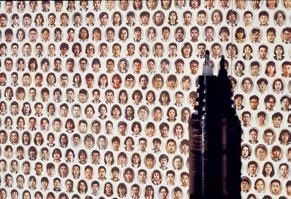
22

23
RAJNI PERERA
Sirens
2018
Acrylic paint on wood panel 48" x 96"
Commissioned by the Schulich School of Business
In this painting, commissioned by the Schulich School of Business, Rajni Perera has interpreted four key values of this educational institution. From left to right, the female figures represent Globalization, Diversity, Innovation and Sustainability. Often using colour and shape to create a symbolic language exploring gender, ethnography and dream worlds, here Perera has merged bodies with the aesthetics of indexical scientific diagrams and fictional storytelling to depict humanity as a dynamic and wayfaring species seeking to understand eternity as it simultaneously strives for peace and prosperity. Born in Sri Lanka and based in the multicultural city of Toronto, Perera seeks to deconstruct and view the female body image through a non-European lens, often referencing Rajput and Mughal miniatures, diasporic futurism and science fiction. A graduate of OCAD University, her work has been exhibited in Toronto at the Art Gallery of York University and in Edinburgh, Tokyo, Colombo, Dubai and Brooklyn. Perera has received grants from the Toronto Arts Council, the Ontario Arts Council and the Canada Arts Council.

24

25
MATT GORBET AND SUSAN GORBET Up/Down
2006
LED lighting, camera, people, custom software, network data
Wall installation
Commissioned by the Schulich School of Business
The work of Toronto-based artists Matt and Susan Gorbet reflects their backgrounds in design, technology and psychology. Using technology in unexpected ways, the husband and wife team creates highly innovative and interactive works of art for public spaces. Up/Down o ers a metaphorical link between major global financial markets and those who work and study at the Schulich School of Business. Market indices, including New York’s Dow Jones, Tokyo’s Nikkei, Hong Kong’s Hang Seng, London’s FTSE 100 and Toronto’s S&P/TSX, are represented by long, narrow openings positioned as though on a world map. The colours within each opening reflect real-time percentage changes in each market’s index, from red (negative) through blue (neutral) to green (positive). At the same time, as people move up and down the stairs facing the installation, these individuals are reflected in the rippling white light flowing up and down through the channels. This interaction symbolizes the impact of individuals on the markets of the world, both globally and locally. Up/Down visually captures this “glocalization”, the balancing interactions of global systems and local action, and their importance to international trade and economic development. The Gorbets’ work has been exhibited at prestigious international institutions such as ARS Electronica in Linz, Austria, the NTT InterCommunication Center in Tokyo and the Royal Ontario Museum in Toronto.

26
Toronto New York Mexico City Sao Paolo S&P/TSX Composite Dow Jones Composite IPC Mexico IBOVESPA London Frankfurt Johannesburg FTSE 100 DAX JSE All-Share Hong Kong Tokyo Mumbai Sydney Hang Seng Nikkei BSE Sensex All Ordinaries Toronto S&P/TSX Composite New York Dow Jones Composite Mexico City IPC Mexico São Paulo IBOVESPA London FTSE 100 Frankfurt DAX Johannesburg JSE All-Share Hong Kong Hang Seng Tokyo Nikkei Mumbai BSE Sensex Sydney All Ordinaries

27
KELLY MARK
Everything is as it should be Nothing is ever as it seems 2018
Aluminum letters, brushed finish 5.443" (h) x 72" (w) x 0.5" (d)

Commissioned by the Schulich School of Business
Working in a variety of media including sculpture, video, installation, drawing, photography, sound, performance and public interventions, Toronto-based artist Kelly Mark often produces overtly political statements or seeks to find humour in the repetitive, mundane rituals of everyday life. Considered one of Canada’s most important conceptual artists, her text-based artworks, which waver between desired self-improvement and a recognition of failure, demonstrate the broad range of emotions we all navigate in our inner worlds. This laser-cut aluminum and steel piece reveals another common theme in her work: the elusive vulnerability of life and the anxiety that results as time slips by. Exhibiting widely since 1991, Mark’s pieces can be found in important corporate and institutional collections across Canada. Her multidisciplinary work has appeared frequently in most of Canada’s important museums, including the National Gallery of Canada in Ottawa, the Art Gallery of Ontario in Toronto, The Power Plant in Toronto and the Musée d’Art Contemporain de Montréal. She has represented Canada at the Sydney Biennale and Liverpool Biennale and is a recipient of numerous Canada, Ontario and Toronto Arts Council grants.
28



29
KEN LUM
Sam Wah and Sons
2004
Plexiglass, powder coated aluminum, enamel paint, glue, plastic letters 84" x 84"
Chinese-Canadian artist Ken Lum is credited with helping to bring international attention to Vancouver as a significant centre for contemporary art. His work comments on the relationship between work and class in society (in particular the working class) as well as themes of migration and the tensions that arise from it. In this work from the Shopkeeper Series, Lum charts the transition of a family business from one generation to the next. Using a Pop aesthetic derived from signage typical of a modestly sized business, the proprietor of this fictitious business mixes promotion of a service with personal expression. The private sentiment displayed in this commercial medium shifts a mercantile announcement into a portrait of family ownership, and delineates a landscape where the appropriate boundary between personal relations and business functions has deteriorated. Working in widely diverse media, some of Lum’s solo exhibitions include the National Gallery in Ottawa, the XXIV São Paulo Bienal, where he represented Canada, the Whitney Museum in New York and the Art Gallery of Ontario. He has taken part in many prestigious exhibitions around the world including Documenta11 and the Venice Biennale. Lum has held teaching positions in Canada, the United States, Europe and Asia, including at the University of British Columbia, Bard College and the University of Pennsylvania.

30

31
JÉRÔME FORTIN
Seascapes
2005 – series of 6
Shredded plastic bottles
22" in diameter
Jérôme Fortin is an artist whose ecological conscience is at the heart of his work. Based in Montréal, he encourages viewers to see the divine potential of the little things in life. Extracting the leftover possibilities contained in the detritus of disposable manufactured culture, Fortin creates delicate abstract compositions and meticulous assemblages from dull, everyday found objects. In these works from the Seascapes series, the artist has shredded plastic bottles found along the shores of the St. Lawrence River and created textural sculptures whose form is reminiscent of waves. These lyrical pieces inspire new uses for raw materials once their original function has been exhausted, and quietly criticize the builtin obsolescence of commercial products. Fortin’s work has been exhibited internationally and can be found in many collections including the Musée national des beaux-arts du Québec, the Musée d’art contemporain de Montréal and the Bibliothèque nationale du Québec.

32



33
MARTIN PARR
The Phone Book
1998–2002 (series of 20 framed photographs)

C-prints
16" x 20"
Martin Parr, a British photographer, has documented strangers talking on their mobile phones in Hong Kong, Japan, Europe, the United Kingdom and the United States. His work is a form of social documentary which reflects our universal obsession with accessibility, movement and instant communication. Parr’s mobile phones become extensions of their users’ style. They o er insights into how we seek to accessorize and personalize technology. Fashion trends across cultures become apparent, especially in Japan, where it is common practice to adorn phones with charms and decorations. Parr o ers us a global snapshot of how we both utilize and humanize technology. His art asks us to consider the manner in which the communication devices of the future will be integrated into our everyday lives. Parr’s work can be found in numerous museum collections including New York’s Museum of Modern Art, Tokyo’s Museum of Modern Art and London’s Tate Gallery.
34


35
ALAIN PAIEMENT
Pane Mundial

2002
Digital print
36" x 144"
Alain Paiement drops viewers into the turbulent midst of things. The Montréalbased artist uses the topographic methods of a geographer to document the chaos of modern life. Digitally stitching together hundreds of juxtaposed photographs shot from above with a perspective correcting lens, Paiement presents many points of view at the same time, enabling analytic deconstruction. Here we see the ground floor of a busy bakery in Montréal from an omniscient perspective. An operational process flow diagram comes to life and the image depicts all of the daily activities required for the functioning of the small business. Outside, people celebrate the victory of the Brazilian football team, 2002 World Cup champions, a suggestion of the pervasive influence of globalization. As the artist himself says, “The activity shows the very local economy of a family enterprise, while the event outside is evocative of a world economy.” Paiement’s important exhibitions include the Musée national des beaux-arts du Québec and the Centre Canadien d’Architecture, Montréal.
36


37
ALAIN PAIEMENT
Fatras
2015
Transfer by sublimation on aluminum
Unframed: 80" x 130 ¾"
Framed: 81" x 131 ¾"
Artist proof (edition 2, 1 AP)
Montréal-based artist Alain Paiement considers our world from above. As if viewed from an aerial drone or a near-Earth satellite, his photographic experiments in perspective o er high-resolution investigations of daily human enterprise. Paiement’s artwork reassembles multiple points of view in space and time. Continuing his interest in creating encyclopedic maps of architectural spaces and the activities that take place within, in this work, Paiement has documented the evidence of mercantilism and consumption as found in the oldest open-air market in Brussels. This work also hangs in the Canadian embassy in Brussels. Paiement was the first artist from Québec to show at the Whitney Museum of American Art in New York and he has had solo exhibitions at many important institutions including the Musée d’art contemporain de Montréal, the Canadian Centre for Architecture and the Darling Foundry. His work has been collected by the National Gallery of Canada, the Musée des beaux-arts de Montréal, the Musée national des beaux-arts du Québec and the Canadian Centre for Architecture.

38

39
MICHAEL AWAD
Bay Street Rush Hour
2005
Digital C-print
24"x 360"
Commissioned by the Schulich School of Business
Michael Awad lives in Toronto and practises both as an artist and an architect. Using a special camera he developed and built himself that captures only objects in motion, the artist creates cinematic records of urban life. In this scene of downtown Toronto, the energy and motion of busy pedestrians and TTC buses are captured, while the surrounding buildings remain blurred. Emphasizing the ultimate importance of people in business culture, this image of Bay Street during rush hour was created by optical and mechanical means, without digital manipulation. Awad’s first gallery exhibition was held at Toronto’s contemporary art gallery The Power Plant in 2001, a remarkable debut for any artist, and his meteoric rise to acclaim continued when he was selected in 2002 as Canada’s representative at the prestigious Venice Biennale of Architecture.
40

41
MICHAEL AWAD
Grand Canal, Venice
2005
Digital C-print
12" x 96"
Edition 1/8
Artist Michael Awad uses a camera he built himself to document cities around the world. The results are ribbon-like film reels that blend the moving image with still photography to produce an innovative way of documenting places. Here, the city of Venice is pictured. The disruptions in focus and rippling vantage points provide a metaphor for a city built on water. Awad went on to undertake a work called The Entire City Project, where he sought to capture all aspects of Toronto. In 2014 he was commissioned by the Royal Ontario Museum to document the entire museum, including the vaults where art is stored, using this technique. The result was an epic solo exhibition depicting thousands of feet of museum space, including areas never before seen by the public.

42


43
ZACHARI LOGAN
Sandbar o Lake Ontario
2018
Chalk pastel on paper 30" x 108"
Commissioned by the Schulich School of Business
Saskatchewan-based Zachari Logan’s meticulous depictions of flora and fauna o er a visual language that explores the relationships between identity, memory and place. His highly detailed representations of native and non-native wildflowers and weeds, growing in abundance without interference or assistance, signify a metaphorical space where human intervention such as roads and industrial farming meet a resilient botanical world. While the edge of an early-dawn or late-dusk sun crosses the distant horizon in this attenuated composition, a fertile shoreline is lit by an artificial light, signifying encroachment into the wilderness by a human presence. Logan’s drawings, ceramic sculptures and installations have been exhibited across Canada and in cities including Athens, Barcelona, London, Milan, New York, Paris and Vienna. His work has been collected by the National Gallery of Canada, the Art Gallery of Ontario, the Remai Modern in Saskatoon and the Leslie Lohman Museum in New York. He has received grants from the Canada Council for the Arts, the Saskatchewan Arts Board and the Peter S. Reed Foundation.

44


45
GEOFFREY JAMES
Bathurst Bridge, Toronto 2003
Toned gelatin silver print
23" x 55"
Edition 2/8
Commerce Court, Toronto 2003
Toned gelatin silver print
23" x 55"
Edition: 1/8
Welsh-born Canadian photographer Geo rey James works within a long tradition of landscape photography. The artist’s images of land use delineate the degree to which humans have shaped the natural world, and investigate the intersection between nature and the built environment. Though there are no people in these culturally charged landscapes of Toronto, we are clearly presented with the industrious and creative imprint of man. Like all his work, these pieces concern themselves with what humans have done in, with and to the natural world. James received an MA in History from Oxford University. He is a self-taught photographer. His solo exhibitions include the Canadian Cultural Centre in Paris, the San Diego Museum of Contemporary Art, the National Gallery of Canada in Ottawa and the Fondation pour I’Architecture in Brussels.

46


47
VIK MUNIZ
Still life with Lemons, Oranges and a Cup of Water, after Francisco de Zurbarán (from Pictures of Magazines)
2004
Chromogenic print (framed)
40" x 67"
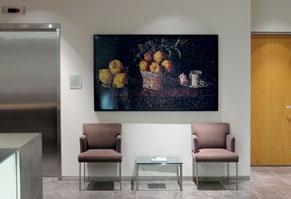
Edition 6/6
Though Vik Muniz’s works are always in the photographic medium, they draw on his remarkable talents as a painter, illustrator and sculptor, as much as his skill with a camera. Here, Muniz has meticulously reconstructed important still lifes by 17th century Spanish painter Francisco de Zurbarán and 18th century French painter Jean-Baptiste-Siméon Chardin using paper circles harvested from various magazines with a hole puncher. By arranging the accumulated confetti to carefully mimic famous paintings, Muniz tricks the viewer’s eye and emphasizes the manner in which the media influences our perception of the world. Part homage, part appropriation and part original invention, Muniz’s works constantly inspire new ways of looking at familiar things. Born in Brazil, Muniz has achieved critical acclaim for his artwork and has exhibited worldwide.
48

49
VIK MUNIZ

Seville Orange, Silver Goblet, Apples, Pear, and Two Bottles, after Jean-Baptiste-Siméon Chardin (from Pictures of Magazines)
2004
Chromogenic print (framed)
40" x 51.5"
Edition 5/6
Creating images using an extraordinary range of materials, including chocolate syrup, thread, toys, diamonds and spaghetti, the Brazilian-born, New York-based artist Vik Muniz recreates classic pictures from the public’s collective memory and photographs the results. The two photographs acquired by the Schulich School of Business are from the Pictures of Magazines series. Here, Muniz has meticulously reconstructed important still lifes by 17th century Spanish painter Francisco de Zurbarán and 18th century French painter Jean-Baptiste-Siméon Chardin using paper circles harvested from various magazines with a hole puncher. Muniz has exhibited in museums around the world, including a solo show at the Whitney Museum in New York.
50

51
JENNIFER MARMAN AND DANIEL BORINS
Busy Beaver
2022
Wood, metal, found logs
Beaver: 46" (h) x 35" (w) x 96" (d)
Commissioned by the Schulich School of Business
Jennifer Marman and Daniel Borins have collaborated creating sculpture, installation and media art since 2001. Their work is often intervention based, situating art within the context of everyday life, while also referencing aspects of both mass media and art history. Busy Beaver is a social sculpture, inviting students to sit on or gather around its logs as a respite from daily academic life. The beaver, Canada’s national animal, symbolizes industriousness, creativity and the inherent intelligence of nature. This faceted wood beaver has gnawed through the adjacent logs in a systematic and programmed manner, producing geometric carvings. The digital “byte” alludes to the paradox of intelligence in nature, compared with computer intelligence. Busy Beaver cleverly references new frontiers for innovation and creativity, while nodding to Canada’s natural heritage. Marman and Borins’ work is in collections such as the National Gallery of Canada, the Art Gallery of Ontario and the Art Gallery of Hamilton.

52

53
JENNIFER MARMAN AND DANIEL BORINS
Presence Meter
2007
Analog panel meters, ultrasonic sensors, microcontroller, starfire crystal, aluminum support 31 5 8" x 28"

Jennifer Marman and Daniel Borins inject intelligent humour and pop culture into conceptual art. Working together since 2001, they utilize mass-produced components from the commercially designed and industrially built world to comment on our increasingly digital and consumerist culture. In this work, Presence Meter, the customized analog meters sense inaudible ultrasonic sound waves to gauge the proximity of nearby viewers’ bodies. The resulting proximity reading is represented by the position of the needles on the panel meters; the closer the viewer gets, the more the needles are agitated and the greater the vibrancy of the optical e ect. Residing somewhere on the spectrum between “interactive” and “reactive”, this piece addresses the manner in which we interface with the machines that are so pervasive in contemporary life.
Marman and Borins both graduated from OCAD University in 2001. Their work is in many collections, most notably the National Gallery of Canada.
54

55
VOLKER SEDING
Rue de Richelieu, Paris, 2022
2586 Fondamenta e Ponte Diedo, Venice, 2003
130 Greene St., New York City, 1999
Gelatin silver prints mounted to archival board 40" x 24"
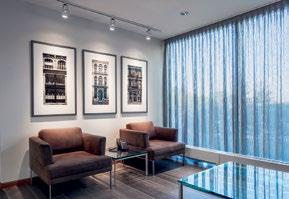
Editions of 15
Sculptural and precise, the images of German-born photographer/ cinematographer Volker Seding speak to the tensions between the passage of time and a moment frozen in time. Photographed in cities such as New York, Paris and Venice, each of the 19th and early 20th century buildings in the series Facades records the history of both a street and a city. The buildings are imbued with personality, private meanings and cultural memory. To the artist, they are survivors, characters who tell their own stories. Though each may have varied decorative elements, the buildings all have the same core architectural design, regardless of where or when they were constructed. To Seding, these core similarities reflect the commonality of all people. Seding’s work has been shown and collected by galleries and museums across North America, including the Art Gallery of Ontario, the Canadian Museum of Contemporary Photography, Houston’s Museum of Fine Arts and the National Gallery of Canada.
56

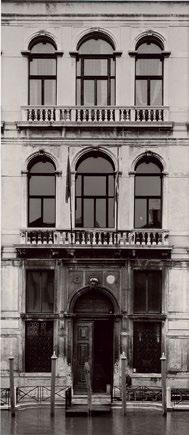
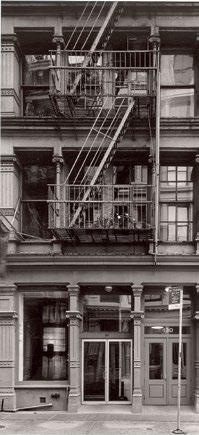
57
AYDIN BÜYÜKTAS
Second Hand Car Part
2016
49" x 68"
C-print
Edition 2/5
Bus Station
2016
43" x 70"
C-print
Edition 1/7
Turkish photographer Aydin Büyüktas employs aerial drone photography and mastery of digital software to distort real landscapes and inject an unsettling third dimension into an otherwise two dimensional visual medium. His warped panoramic portraits of popular locations in cities around the world reference drawings by M.C. Escher and Christopher Nolan’s film Inception in their impossible, gravity-defying and disorienting panoramic viewpoints. However, Büyüktas’ primary inspiration comes from Edwin Abbott’s satirical novel Flatland, in which the characters’ perception of reality is limited by their own outlook. These painstakingly-produced images encourage viewers to consider new perspectives and exploit new technologies to gain advantage. Büyüktas, who lives and works in Istanbul, has received broad media attention for his bewildering images, which have featured prominently on Instagram and in arts and culture magazines including Wired, Hypebeast and The Sunday Times His work has been shown in galleries in Toronto, London, New York, Miami and Istanbul, as well as at the Museum für Gestaltung Zürich.

58


59
MICAH LEXIER
A Minute of My Time, July 17, 2000 13:21 – 13:22
2006
Laser-cut hot-rolled steel, posts
63" x 132"
Commissioned by the Schulich School of Business
Winnipeg-born, New York-based artist Micah Lexier works within the tradition of conceptual art. Many of his thoughtful pieces are meditations on increments of time. They examine the way in which individuals divide experience into units in an attempt to organize and systematize the world. Initiated in 1995, A Minute of My Time consists of a series of related works within the artist’s larger investigation into the passage of time. For each one, he takes exactly one minute to make a small drawing. These drawings are then enlarged to various scales, giving symbolic importance to otherwise insignificant moments. By marking a specific point in the passage of life, the works make the intangible visible. Lexier has exhibited at important institutions internationally, including the Centre for Contemporary Photography in Melbourne and the Museu de Arte de São Paulo. His works are included in the permanent collections of the Art Gallery of Ontario, the National Gallery of Canada, the British Museum and the Jewish Museum in New York.
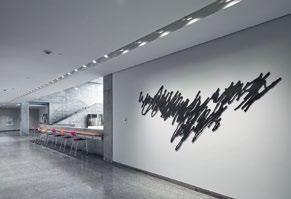
60

61
CARTER KUSTERA
Amalgamated Inc.
2018
Acrylic on canvas
60" x 168"
Commissioned by the Schulich School of Business
This painting by Carter Kustera delineates the colourful diversity and internationalism of the Schulich School of Business. It encourages the viewer to question how our ethnic, class and cultural di erences contribute to prosperity and success. New York City-based Kustera was born in Sault Ste. Marie, Ontario and educated at OCAD University. He has been the recipient of many important accolades such as grants from the Canada Council, the PollockKrasner Foundation and the New York Foundation for the Arts. His work has been exhibited regularly since 1986 at important institutions such as MoMA PS1 and The Aldrich Contemporary Art Museum. The most prestigious art world event, the Venice Biennale, has featured his work twice, in 1993 and 1997. Kustera’s work has true crossover appeal, reaching mass audiences through a computer animation project for U2’s “PopMart” world tour, as well as a signature line of products sold in major retail stores across the United States. Collections as diverse as those of the Progressive Art Collection, the Israel Museum in Jerusalem and the Vatican in Rome have acquired his work.

62

63
LUC COURCHESNE
Images from the Panoscopic Journal 2000–2001
Digital prints on acid-free paper mounted between plexiglass 10" in diameter

Luc Courchesne, a Canadian artist based in Montréal, photographs 360-degree images of the space that surrounds us. By immersing viewers in various sites around the world – from the busy markets of Tokyo to the Manhattan skyline as seen from Brooklyn – the artist encourages problem-solving via wide-angle consideration of the whole rather than a narrow focus on the part. The photos rotate, providing a view from any orientation, and the artist himself is revealed in the centre of each work. Courchesne has received international recognition for his video installations. His work has been shown and collected by galleries and museums worldwide, including New York’s Museum of Modern Art, Tokyo’s NTT lnterCommunication Center and Montréal’s Musée d’art contemporain.

64



65
NIALL DONAGHY
Labrys
2004
Oak
132" diameter, 4" width
Commissioned by the Schulich School of Business
Niall Donaghy is a Canadian sculptor and installation artist. He received a Master of Fine Art from York University (2005). Donaghy explores issues of navigation and mythical adventure. His works provide special contexts where viewers are taken from one place to another. In this oak sculpture, providing a fitting theme for the School’s Executive Dining Room, concentric rings speak of progressive tree-like growth and lead the eye intuitively towards a central location where power, knowledge and influence meet. Using labyrinthine passages as a theme in much of his work, Donaghy creates sculptures that suggest long voyages, challenging endeavours and ultimate destinations. Riddled with choices, turns, pitfalls and opportunities, these optically dynamic objects promise intelligent solutions to intricate and complex problems.

66

67
68 BASEMENT FIRST FLOOR THIRD FLOOR SECOND FLOOR 2.3 B.1 1.1 1.2 1.3 1.4 3.1 3.2 2.6 2.2 2.1 2.5 2.4 3.3 3.5 3.4 1.5 3.6 3.7
SEYMOUR SCHULICH BUILDING






MATT GORBET AND SUSAN GORBET
ALAIN PAIEMENT Page 36

VIK MUNIZ
50
Seville Orange, Silver Goblet, Apples, Pear, and Two Bottles, after Jean-Baptiste-Siméon Chardin (from Pictures of Magazines)
MARTIN PARR


LEXIER
MARY TEMPLE Page 14 York University Window: East Wall, South Light
1.2
VOLKER SEDING Page 56
Rue de Richelieu, Paris 2586 Fondamenta e Ponte Diedo, Venice 130 Greene St., New York City
1.3
VIK MUNIZ Page 48
Still life with Lemons, Oranges and a Cup of Water, after Francisco de Zurbarán (from Pictures of Magazines) 1.4
NIALL DONAGHY Page 66
KEN LUM
DO HO SUH







AWAD
LUC COURCHESNE
Journal
GEOFFREY JAMES Page 46 Bathurst Bridge, Toronto Commerce Court, Toronto
JÉRÔME FORTIN Page 32
MICHAEL AWAD Page 42 Grand Canal, Venice
EDWARD BURTYNSKY Page 20
Nanpu Bridge Interchange, Shanghai City, China Manufacturing #2, Shift Change, Yuyuan Shoe Factory, Gaobu Town, China

RYAN McGINNESS Page 10
JENNIFER MARMAN AND DANIEL BORINS


69
3.2
Page 54 Presence Meter
Chic Lush 2.1
Page
3.5
Page 64 Images from the Panoscopic
3.4 3.3
MICHAEL
Page 40 Bay Street Rush Hour
Up/Down
Page 26
Page
The
34
Phone Book
A Minute
July
13:21 – 13:22 2.3 B.1 1.1
MICAH
Page 60
of My Time,
17, 2000
3.1
Seascapes 2.6
Pane
2.2
Page
Who
2.5
Mundial
22
Am We?
Sam
2.4
Page 30
Wah and Sons
Labrys
1.5
3.6
3.7
70 BASEMENT SECOND FLOOR FIRST FLOOR THIRD FLOOR 1.1 1.2 1.3 2.3 2.4 B.1 2.2 2.1 3.1 3.2
ROB AND CHERYL McEWEN GRADUATE STUDY & RESEARCH BUILDING








JENNIFER
HANK WILLIS THOMAS

GEOFF McFETRIDGE

71
MARMAN AND DANIEL BORINS Page 52 Busy Beaver
Page 12 Visa
Fatras
1.1 1.2 ALAIN PAIEMENT Page 38
1.3
KELLY
it seems 2.4
AYDIN BÜYÜKTAS Page 58 Second Hand Car Part Bus Station 2.3
MARK Page 28 Everything is as it should be Nothing is ever as
Amalgamated Inc.
CARTER KUSTERA Page 62
B.1
44 Sandbar
Lake
2.2
ZACHARI LOGAN Page
o
Ontario
Page 16 Up the Stairs 2.1
24 Sirens
18 Edge of a Moment 3.2
RAJNI PERERA Page
3.1 MERYL McMASTER Page
This annual art exhibition at the downtown Miles S. Nadal Management Centre is a joint venture between the Schulich School of Business and the Graduate Program in Visual Arts, School of the Arts, Media, Performance & Design, York University. The exhibition was launched just after the Management Centre opened in 1995 and has run ever since, except during the COVID-19 period. It has two dimensions. It is an exhibition of student work from the graduating class in Visual Arts, with pieces selected by a jury and installed for a 12-month period in the Management Centre. It also includes a permanent collection of student work purchased by the Schulich School. The selection jury awards a purchase prize each year from among the previous year’s installations.
The permanent collection has grown in size over the years and supplements the student work that is installed on a yearly basis. Art@Suite500 represents probably the largest and most comprehensive collection of graduate student work from Visual Arts, assembled over several decades. It is an exhibition that brings some of York University to Bay Street, provides a visual experience for 12,000 or more participants in Schulich’s executive programs, and is another example of the commitment of the Schulich School to integrate art into the learning environment at its various facilities.

72
ART@SUITE500
Judy Schulich with Sara Maston, MFA ’18, York University at Art@Suite500.





























































































































